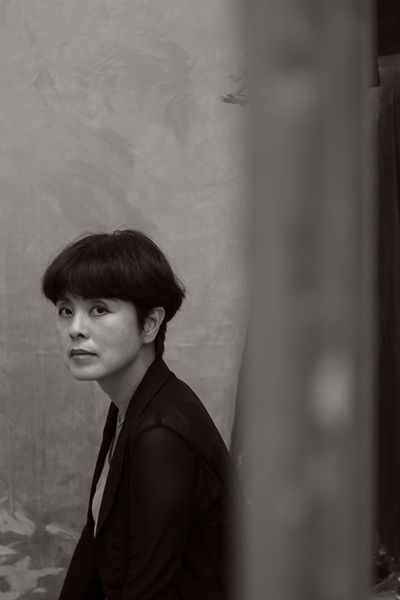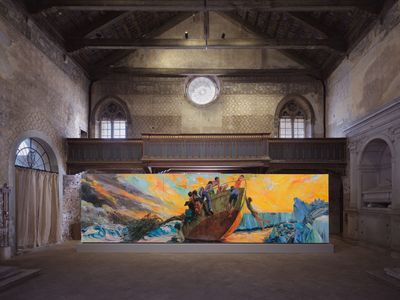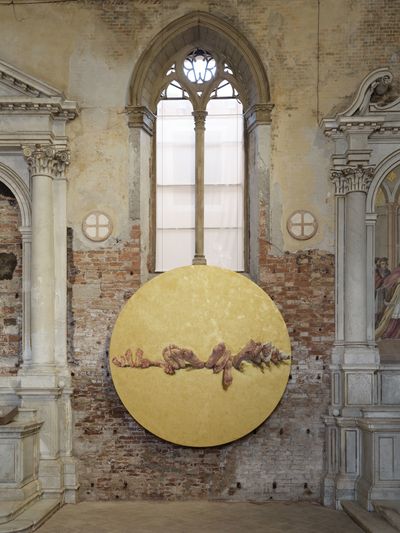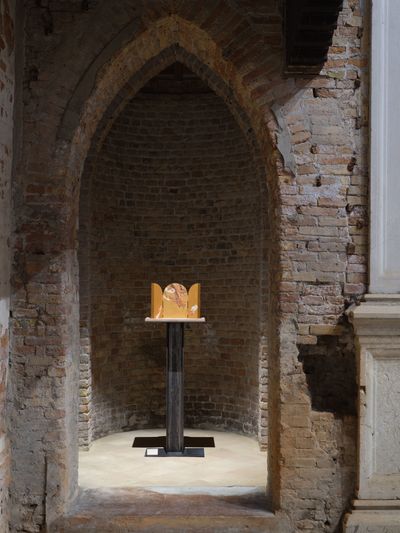
18 Apr Yu Hong's Subjects Are Born to Die in Venice Church | News
Source Credit: Content and images from Ocula Magazine. Read the original article - https://ocula.com/magazine/art-news/yu-hongs-subjects-are-born-to-die-in-venice-church/
One of China’s greatest portrait artists paints the whole human life cycle in an exhibition presented by the Guggenheim’s Asian Art Initiative.

Installation view: Yu Hong: Another One Bites the Dust, Chiesetta della Misericordia, Cannaregio, Venice (20 April–24 November 2024). © Yu Hong. Courtesy Lisson Gallery. Photo: George Darrell.
There’s an entire wall dedicated to portraits by Yu Hong in the Long Museum West Bund‘s blockbuster tenth anniversary exhibition, Portraits (8 November 2023–7 May 2024).
More than perhaps any other artist, she and husband Liu Xiaodong put faces to the uneven economic boom that quickly created a generation of millionaires while leaving hundreds of millions much nearer to the poverty line.
Backed by the Asian Art Initiative of the Guggenheim Museum, Yu is exhibiting paintings in Venice’s deconsecrated Chiesetta della Misericordia (the Church of the Abbey of Mercy).
She spoke to Ocula about depicting life’s ‘struggle in the dust’ in her exhibition, Another One Bites the Dust (20 April–24 November, 2024).
Portrait of Yu Hong. Courtesy ‘Women in Motion’, Kering. Photo: Greg Mei.
What interests you in exhibiting your paintings in a deconsecrated church?
I have been to Venice many times and am deeply impressed by the various styles of churches there. When conceiving this exhibition, I wanted to have a dialogue with the religious art there, which essentially conveys contemplation of the ultimate questions of life. My exhibition also discusses life and death and various circumstances of life, which somehow connect with the church space.
Chiesetta della Misericordia, the church that was chosen for the exhibition, is highly appropriate both in style and in size. Condensed through the baptism of history, the space possesses a profound sense of time, which fits well with the style and theme of my work. When designing the layout of the exhibition, we’ve also adopted a different approach, trying our best to integrate the works into the space to form an organic whole.
Installation view: Yu Hong: Another One Bites the Dust, Chiesetta della Misericordia, Cannaregio, Venice (20 April–24 November 2024). © Yu Hong. Courtesy Lisson Gallery. Photo: George Darrell.
The Tomb-Sweeping holiday took place this month in China, with people burning offerings to their ancestors. Ash and dust are associated with death across cultures, and that’s explicit in the title of your exhibition. Why did you want to depict the full life cycle in this show, from birth to death?
I’ve wanted to create a series titled ‘Tumbling in the Dust’, inspired by Chinese writer Lu Xun’s Random Thoughts, 25. Although Lu Xun wrote about the Republic of China era before 1949, this phrase still applies today. Whether in China or elsewhere, life is a struggle in the dust, either consciously or forcibly, until returning to dust in the end.
I have always been interested in the process of human life, and the theme of this exhibition is the life and death of humans, as well as the different circumstances that life presents to us. This exhibition is an investigation into the ultimate questions of life, such as who we are, where we come from, where we want to go, what life and death are, and how we should live. These are questions that no one can ignore, and I hope to present my thoughts through my painting.
Installation view: Yu Hong: Another One Bites the Dust, Chiesetta della Misericordia, Cannaregio, Venice (20 April–24 November 2024). © Yu Hong. Courtesy Lisson Gallery. Photo: George Darrell.
You choose the most startling angles and perspectives to paint from. How do you pick your angles?
Many of my works depict the relationship between the growth of the individual and the era and society. I try to present this big theme in different ways. The ‘Witness to Growth’ series, which I started to paint in the ’90s, has two intertwined themes: one depicting the significant changes in society and the other depicting the personal growth of two generations of women, myself and my daughter.
Later on, I painted the ‘She’ series, depicting women of different identities and backgrounds and their living environment. In the following series ‘Wondering Clouds’, through interviews, filming, and painting, I presented the social and psychological hardships faced by people with depression.
Installation view: Yu Hong: Another One Bites the Dust, Chiesetta della Misericordia, Cannaregio, Venice (20 April–24 November 2024). © Yu Hong. Courtesy Lisson Gallery. Photo: George Darrell.
You’ve used gold prominently in this show, which is fitting for a church, but you’ve also used it a lot over the years when you haven’t been showing in holy sites. Why has gold been such an important colour in your work?
I have been using gold as the background of my paintings for almost 20 years. I very much like it as a colour, it makes the picture bright and brilliant. But the most important thing is that gold itself is a very special colour, it’s been used to represent power, wealth, and faith since ancient times to the present, both in the Western and the Eastern painting tradition.
The themes in my paintings often focus on life, death, and fate, which are in some way in line with the themes of many religious paintings, so arches and gold have become the main visual elements of my exhibition. —[O]
Source Credit: Content and images from Ocula Magazine. Read the original article - https://ocula.com/magazine/art-news/yu-hongs-subjects-are-born-to-die-in-venice-church/





